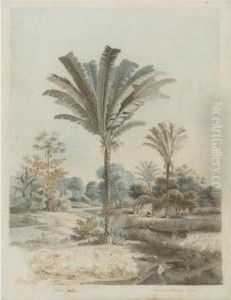Carl Friedrich Phil. Von Martius Paintings
Carl Friedrich Philipp von Martius was not an artist in the traditional sense of a painter or sculptor, but rather a renowned German botanist and explorer. Born on April 17, 1794, in Erlangen, Bavaria, he became one of the most significant figures in the study of Brazilian flora and the documentation of the natural history of South America.
Martius studied medicine and botany at the University of Erlangen where he received his doctorate. His passion for botany was further nurtured under the guidance of the famous naturalist Johann Christian von Schreber. In 1817, Martius embarked on a research expedition to Brazil alongside zoologist Johann Baptist von Spix, which was sponsored by the king of Bavaria. This journey lasted three years, during which Martius collected a vast number of plants and made extensive notes on the geography, ethnography, and natural history of the regions they visited.
Upon his return to Germany, Martius began the monumental task of classifying and documenting the collected specimens. He worked on the 'Flora Brasiliensis' from 1840 until his death, which was a comprehensive flora of Brazil that included descriptions and illustrations of more than 22,000 species of Brazilian plants. This work was continued by others and was not completed until 1906, long after his death.
Martius's contributions to botany were not limited to taxonomy. He also made significant contributions to the understanding of the Amazonian ecosystems and the impact of deforestation and other human activities on South American rainforests. He was a proponent of the study of plants within their natural habitats, which influenced the development of ecological science.
He received numerous honors for his work, including being appointed as the director of the Royal Bavarian Herbarium in Munich. He was also a member of various scientific societies and received the title of nobility 'von Martius' in recognition of his achievements.
Carl Friedrich Philipp von Martius passed away on December 13, 1868, in Munich, leaving behind a legacy that would benefit botanists, ecologists, and scientists for generations to come. His dedication to the natural sciences and his extensive research, particularly in the context of Brazilian flora, has had a lasting impact on the field of botany and the study of South American natural history.
